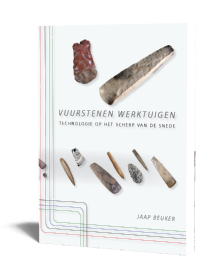Heligoland Flint in Prehistoric Europe
Characteristics, Typology, Distribution, Symbolism and Provenance
Jaap Beuker, Erik Drenth, Klaus Hirsch, Moritz Mennenga & Martin Segschneider | Forthcoming
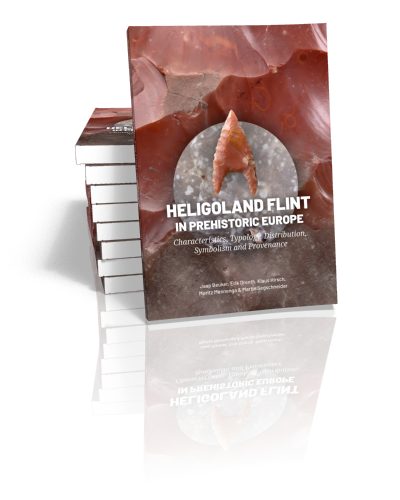
Heligoland Flint in Prehistoric Europe
Characteristics, Typology, Distribution, Symbolism and Provenance
Jaap Beuker, Erik Drenth, Klaus Hirsch, Moritz Mennenga & Martin Segschneider | Forthcoming
Paperback ISBN: 9789464264128 | Hardback ISBN: 9789464264135 | Imprint: Sidestone Press | Format: 182x257mm | ca. 240 pp. | Language: English | 4 illus. (bw) | 190 illus. (fc) | Keywords: flint; red Heligoland flint; tabular Heligoland flint; prehistory; archaeology; crafting skills; material culture; flint axes; flint daggers; flint sickles; Helgoland | download cover | DOI: 10.59641/mm189py
Publication date: 04-12-2025
-
Digital & Online access
Digital/Online version not (yet) available
-
Buy via Sidestone (EU & UK)
Get €5.00 discount on forthcoming books by using coupon code "PRE-ORDER" in your shopping cart!
-
Buy via our Distributors (WORLD)
For non-EU or UK destinations you can buy our books via our international distributors. Although prices may vary this will ensure speedy delivery and reduction in shipping costs or import tax. But you can also order with us directly via the module above.
For UK & other International destinations
For USA/Canada & other International destinations
-
Bookinfo
Paperback ISBN: 9789464264128 | Hardback ISBN: 9789464264135 | Imprint: Sidestone Press | Format: 182x257mm | ca. 240 pp. | Language: English | 4 illus. (bw) | 190 illus. (fc) | Keywords: flint; red Heligoland flint; tabular Heligoland flint; prehistory; archaeology; crafting skills; material culture; flint axes; flint daggers; flint sickles; Helgoland | download cover | DOI: 10.59641/mm189py
Publication date: 04-12-2025

We will plant a tree for each order containing a paperback or hardback book via OneTreePlanted.org.
During a considerable part of prehistory stone tools were indispensable. Flint in particular had properties that made it very suitable for making razor-sharp implements and could often, but not always, be collected locally. Hunters, gatherers and fishers mostly used small tools but with the transition to an agricultural way of living this situation changed, as larger implements became necessary, to cut down trees and work wood for instance.
The raw material suitable for this was often not available locally, so was imported from areas where good raw material was available. It was sometimes extracted on an almost industrial scale and even by underground mining. There are many known places in Europe where this extraction took place thousands of years ago. In the first half of the 1980s it became clear that the island of Heligoland also played a role as a large-scale supplier of flint.
Prehistoric tools made from red Heligoland flint and also from tabular Heligoland flint have been found in Denmark, Germany and the Netherlands, sometimes at a distance of more than 300 km from Heligoland. In this book we will describe the research undertaken on various aspects of the use of this flint. The characteristics of the different types, as distinct from flint that does not come from Heligoland, will be discussed. Furthermore, the tools that were made from it, their dating, their possible social and symbolic meanings, and the transport that took place partly by sea, more than 5000 years ago, will be described.
This book is intended for archaeologists, archaeological curators but also for anybody else who has an interest in the story of a fascinating prehistoric flint source.
1 Introduction (Jaap Beuker)
2 Research history (Jaap Beuker)
3 Characteristics of different types of Heligoland flint in comparison with other northern Flint types (Jaap Beuker)
3.1 Type 1 Red Heligoland flint
3.1.1 Resemblances and differences between red Heligoland flint and patinated and burnt other flint types
3.2 Type 2 Yellow-brown Heligoland flint
3.3 Type 3 Heligoland scar flint
3.4 Type 4 Heligoland bone flint
3.5 Type 5 Tabular Heligoland flint
3.6 Other northern flint types
3.6.1 Speckled Senonian flint and Scandinavian Senonian flint versus tabular Heligoland flint
3.7 Scientific research
4 Geology and occurrence of red Heligoland flint and tabular Heligoland flint (Jaap Beuker)
4.1 Is red flint only found on Heligoland?
4.2 Is tabular flint of the Heligoland type only found on Heligoland?
4.3 Possible occurrence of Heligoland flint in glacial depositions
5 Typology, dating and geographical distribution of artefacts from red Heligoland flint, tabular Heligoland flint and Heligoland scar flint
5.1 Red Heligoland flint (Jaap Beuker and Erik Drenth)
5.1.1 The Netherlands (Jaap Beuker and Erik Drenth)
5.1.2 Germany (Martin Segschneider and Moritz Mennenga)
5.1.3 Denmark (Klaus Hirsch)
5.2. Tabular Heligoland flint and Heligoland scar flint (Jaap Beuker)
5.2.1 Tabular Heligoland flint sickles
5.2.2 Tabular Heligoland flint daggers
5.2.3 Tabular Heligoland flint axes and chisels
5.2.4 Tabular Heligoland flint blades
5.2.5 Miscellanea
5.2.6 Finds of artefacts of tabular Heligoland flint and Heligoland scar flint in Drenthe, Netherlands
5.2.6.1 Tabular Heligoland flint artefacts
5.2.6.2 Tabular Heligoland flint together with red Heligoland flint
5.2.6.3 Artefacts of Heligoland scar flint
5.2.7 Finds of tabular Heligoland flint artefacts in North Germany (Martin Segschneider and Moritz Mennenga)
5.2.8 Finds of tabular Heligoland flint artefacts in Denmark (Klaus Hirsch)
6 Extraction and knapping of Heligoland flint (Jaap Beuker)
6.1 Artefact production and finds of flint artefacts on Heligoland
6.2 Artefact production on the mainland
6.2.1 Emmen, Netherlands, Drenthe
6.2.2 Midlum, Germany, Lower Saxony
7 Social and symbolic significance of Heligoland flint artefacts (Erik Drenth)
7.1 Introductory remarks
7.2 Red Heligoland flint: the question of colour and symbolic meaning
7.3 The TRB West Group and the colour red
7.4 Red Heligoland flint: its social meaning from the perspective of cultural and geographical distribution
7.5 Conclusions
8 Maritime transport and navigation (Martin Segschneider and Moritz Mennenga)
9 Conclusions and final remarks, especially with regard to red Heligoland flint (Erik Drenth and Jaap Beuker)
10 Catalogues of artefacts of red Heligoland flint and tabular Heligoland flint
10.1 Catalogue of artefacts of red Heligoland flint in the Netherlands, Denmark and Germany (Jaap Beuker, Erik Drenth, Klaus Hirsch, Moritz Mennenga and Martin Segschneider)
10.2 Catalogue of artefacts of tabular Heligoland flint in Drenthe, Netherlands (Jaap Beuker)
10.3 Catalogue of artefacts of tabular Heligoland flint in Germany (Martin Segschneider and Moritz Mennenga)
10.4 Catalogue of artefacts of tabular Heligoland flint in Denmark (Klaus Hirsch)
Literature
Appendix 1 Chronological schemes of the Netherlands, Germany and Denmark (Erik Drenth, Martin Segschneider and Klaus Hirsch)
Appendix 2 Publications with information about the archaeology and geology of Heligoland flint (Jaap Beuker)
Appendix 3 Typological remarks (Jaap Beuker and Erik Drenth)
Image credits
Acknowledgements

Jaap Beuker
Jaap Beuker (1952) was curator of archaeology and head curator at the Drents Museum in Assen (Netherlands). Since his retirement in 2017 he has carried out research on various archaeological subjects such as flint technology and prehistoric use of exotic materials. Since the mid-1980s he has worked on the prehistoric import of flint from Heligoland. He has written several articles and books on stone artefacts and especially about the use of red and tabular Heligoland flint.
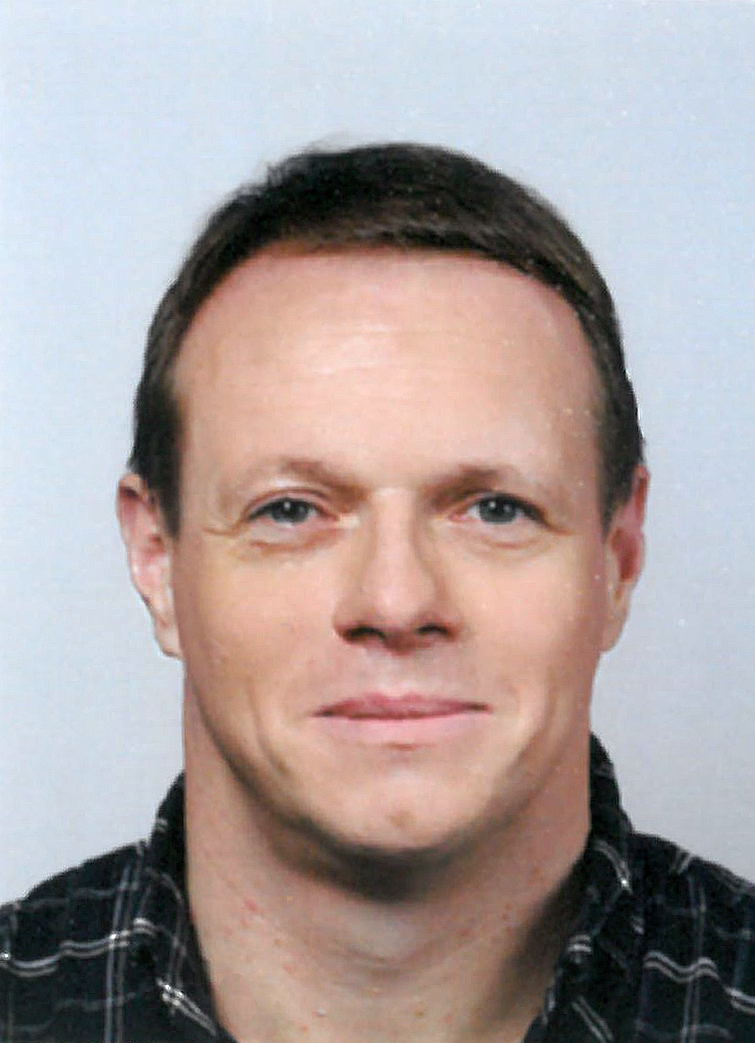
Drs. Erik Drenth
Erik Drenth works as a specialist in prehistoric inorganic material culture (flint, hand-made pottery, metal and stone) at the Dutch archaeological research company BAAC. He has written numerous articles, including contributions to several handbooks on Dutch archaeology, such as ‘Nederland in de prehistorie’.
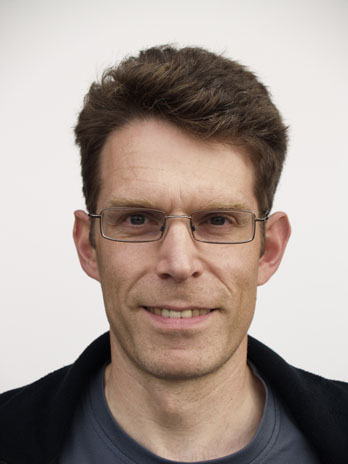
Dipl. Prähist. Klaus Hirsch
Klaus Hirsch (1964) has worked since 2006 as a field archaeologist in the archaeological department of Museum Sønderjylland in Haderslev, Southern Jutland (Denmark). Prior to his work in Denmark, he was employed as a field archaeologist in the State of Mecklenburg-Vorpommern in northeastern Germany. He is a trained prehistoric archaeologist with a special interest in the Late Palaeolithic as well as experimental archaeology, flint sourcing and the prehistoric distribution and exchange of flint in Northern Europe. He has written several articles on various topics, such as experimental archaeology.
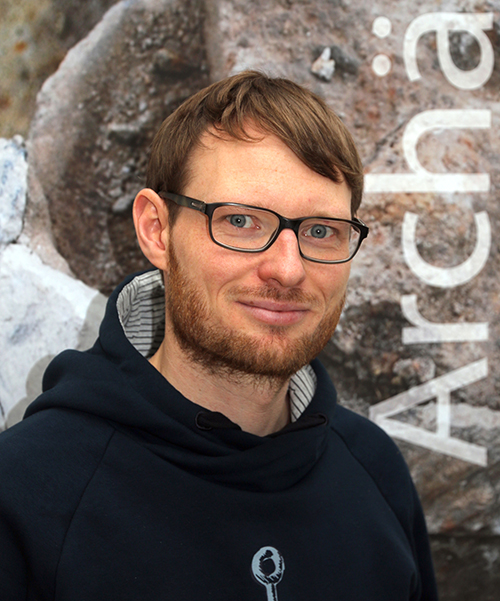
Dr. Moritz Mennenga
Moritz Mennenga (1985) is an archaeologist with a focus on the Neolithic of Northern and Northwestern Europe and a research associate at the Lower Saxony Institute for Historical Coastal Research (NIhK) in Wilhelmshaven. He conducts research on the Neolithic settlement and burial landscape in particular, with a special focus on the analysis of Stone Age sites, landscape reconstruction and human-land relationships. In addition to his archaeological focus, he works in the field of digital archaeology.
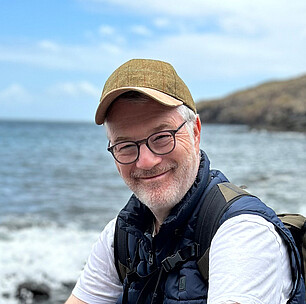
Dr. Martin Segschneider
Dr. Martin Segschneider (1966) specialises in coastal and maritime archaeology and works as a senior researcher at the Lower Saxony Institute for Historical Coastal Research (NIhK) in Wilhelmshaven/Germany. He has published various articles and books about the archaeology of the North Frisian Islands and Heligoland, including the topics of the historic role of Heligoland red flint and prehistoric seafaring.
Abstract:
During a considerable part of prehistory stone tools were indispensable. Flint in particular had properties that made it very suitable for making razor-sharp implements and could often, but not always, be collected locally. Hunters, gatherers and fishers mostly used small tools but with the transition to an agricultural way of living this situation changed, as larger implements became necessary, to cut down trees and work wood for instance.
The raw material suitable for this was often not available locally, so was imported from areas where good raw material was available. It was sometimes extracted on an almost industrial scale and even by underground mining. There are many known places in Europe where this extraction took place thousands of years ago. In the first half of the 1980s it became clear that the island of Heligoland also played a role as a large-scale supplier of flint.
Prehistoric tools made from red Heligoland flint and also from tabular Heligoland flint have been found in Denmark, Germany and the Netherlands, sometimes at a distance of more than 300 km from Heligoland. In this book we will describe the research undertaken on various aspects of the use of this flint. The characteristics of the different types, as distinct from flint that does not come from Heligoland, will be discussed. Furthermore, the tools that were made from it, their dating, their possible social and symbolic meanings, and the transport that took place partly by sea, more than 5000 years ago, will be described.
This book is intended for archaeologists, archaeological curators but also for anybody else who has an interest in the story of a fascinating prehistoric flint source.
Contents
1 Introduction (Jaap Beuker)
2 Research history (Jaap Beuker)
3 Characteristics of different types of Heligoland flint in comparison with other northern Flint types (Jaap Beuker)
3.1 Type 1 Red Heligoland flint
3.1.1 Resemblances and differences between red Heligoland flint and patinated and burnt other flint types
3.2 Type 2 Yellow-brown Heligoland flint
3.3 Type 3 Heligoland scar flint
3.4 Type 4 Heligoland bone flint
3.5 Type 5 Tabular Heligoland flint
3.6 Other northern flint types
3.6.1 Speckled Senonian flint and Scandinavian Senonian flint versus tabular Heligoland flint
3.7 Scientific research
4 Geology and occurrence of red Heligoland flint and tabular Heligoland flint (Jaap Beuker)
4.1 Is red flint only found on Heligoland?
4.2 Is tabular flint of the Heligoland type only found on Heligoland?
4.3 Possible occurrence of Heligoland flint in glacial depositions
5 Typology, dating and geographical distribution of artefacts from red Heligoland flint, tabular Heligoland flint and Heligoland scar flint
5.1 Red Heligoland flint (Jaap Beuker and Erik Drenth)
5.1.1 The Netherlands (Jaap Beuker and Erik Drenth)
5.1.2 Germany (Martin Segschneider and Moritz Mennenga)
5.1.3 Denmark (Klaus Hirsch)
5.2. Tabular Heligoland flint and Heligoland scar flint (Jaap Beuker)
5.2.1 Tabular Heligoland flint sickles
5.2.2 Tabular Heligoland flint daggers
5.2.3 Tabular Heligoland flint axes and chisels
5.2.4 Tabular Heligoland flint blades
5.2.5 Miscellanea
5.2.6 Finds of artefacts of tabular Heligoland flint and Heligoland scar flint in Drenthe, Netherlands
5.2.6.1 Tabular Heligoland flint artefacts
5.2.6.2 Tabular Heligoland flint together with red Heligoland flint
5.2.6.3 Artefacts of Heligoland scar flint
5.2.7 Finds of tabular Heligoland flint artefacts in North Germany (Martin Segschneider and Moritz Mennenga)
5.2.8 Finds of tabular Heligoland flint artefacts in Denmark (Klaus Hirsch)
6 Extraction and knapping of Heligoland flint (Jaap Beuker)
6.1 Artefact production and finds of flint artefacts on Heligoland
6.2 Artefact production on the mainland
6.2.1 Emmen, Netherlands, Drenthe
6.2.2 Midlum, Germany, Lower Saxony
7 Social and symbolic significance of Heligoland flint artefacts (Erik Drenth)
7.1 Introductory remarks
7.2 Red Heligoland flint: the question of colour and symbolic meaning
7.3 The TRB West Group and the colour red
7.4 Red Heligoland flint: its social meaning from the perspective of cultural and geographical distribution
7.5 Conclusions
8 Maritime transport and navigation (Martin Segschneider and Moritz Mennenga)
9 Conclusions and final remarks, especially with regard to red Heligoland flint (Erik Drenth and Jaap Beuker)
10 Catalogues of artefacts of red Heligoland flint and tabular Heligoland flint
10.1 Catalogue of artefacts of red Heligoland flint in the Netherlands, Denmark and Germany (Jaap Beuker, Erik Drenth, Klaus Hirsch, Moritz Mennenga and Martin Segschneider)
10.2 Catalogue of artefacts of tabular Heligoland flint in Drenthe, Netherlands (Jaap Beuker)
10.3 Catalogue of artefacts of tabular Heligoland flint in Germany (Martin Segschneider and Moritz Mennenga)
10.4 Catalogue of artefacts of tabular Heligoland flint in Denmark (Klaus Hirsch)
Literature
Appendix 1 Chronological schemes of the Netherlands, Germany and Denmark (Erik Drenth, Martin Segschneider and Klaus Hirsch)
Appendix 2 Publications with information about the archaeology and geology of Heligoland flint (Jaap Beuker)
Appendix 3 Typological remarks (Jaap Beuker and Erik Drenth)
Image credits
Acknowledgements

Jaap Beuker
Jaap Beuker (1952) was curator of archaeology and head curator at the Drents Museum in Assen (Netherlands). Since his retirement in 2017 he has carried out research on various archaeological subjects such as flint technology and prehistoric use of exotic materials. Since the mid-1980s he has worked on the prehistoric import of flint from Heligoland. He has written several articles and books on stone artefacts and especially about the use of red and tabular Heligoland flint.

Drs. Erik Drenth
Erik Drenth works as a specialist in prehistoric inorganic material culture (flint, hand-made pottery, metal and stone) at the Dutch archaeological research company BAAC. He has written numerous articles, including contributions to several handbooks on Dutch archaeology, such as ‘Nederland in de prehistorie’.

Dipl. Prähist. Klaus Hirsch
Klaus Hirsch (1964) has worked since 2006 as a field archaeologist in the archaeological department of Museum Sønderjylland in Haderslev, Southern Jutland (Denmark). Prior to his work in Denmark, he was employed as a field archaeologist in the State of Mecklenburg-Vorpommern in northeastern Germany. He is a trained prehistoric archaeologist with a special interest in the Late Palaeolithic as well as experimental archaeology, flint sourcing and the prehistoric distribution and exchange of flint in Northern Europe. He has written several articles on various topics, such as experimental archaeology.

Dr. Moritz Mennenga
Moritz Mennenga (1985) is an archaeologist with a focus on the Neolithic of Northern and Northwestern Europe and a research associate at the Lower Saxony Institute for Historical Coastal Research (NIhK) in Wilhelmshaven. He conducts research on the Neolithic settlement and burial landscape in particular, with a special focus on the analysis of Stone Age sites, landscape reconstruction and human-land relationships. In addition to his archaeological focus, he works in the field of digital archaeology.

Dr. Martin Segschneider
Dr. Martin Segschneider (1966) specialises in coastal and maritime archaeology and works as a senior researcher at the Lower Saxony Institute for Historical Coastal Research (NIhK) in Wilhelmshaven/Germany. He has published various articles and books about the archaeology of the North Frisian Islands and Heligoland, including the topics of the historic role of Heligoland red flint and prehistoric seafaring.
-
Digital & Online access
Digital/Online version not (yet) available
-
Buy via Sidestone (EU & UK)
Get €5.00 discount on forthcoming books by using coupon code "PRE-ORDER" in your shopping cart!
-
Buy via our Distributors (WORLD)
For non-EU or UK destinations you can buy our books via our international distributors. Although prices may vary this will ensure speedy delivery and reduction in shipping costs or import tax. But you can also order with us directly via the module above.
For UK & other International destinations
For USA/Canada & other International destinations
- Browse all books by subject
-
Search all books

We will plant a tree for each order containing a paperback or hardback book via OneTreePlanted.org.
You might also like:
© 2025 Sidestone Press KvK nr. 28114891 Privacy policy Sidestone Newsletter Terms and Conditions (Dutch)

